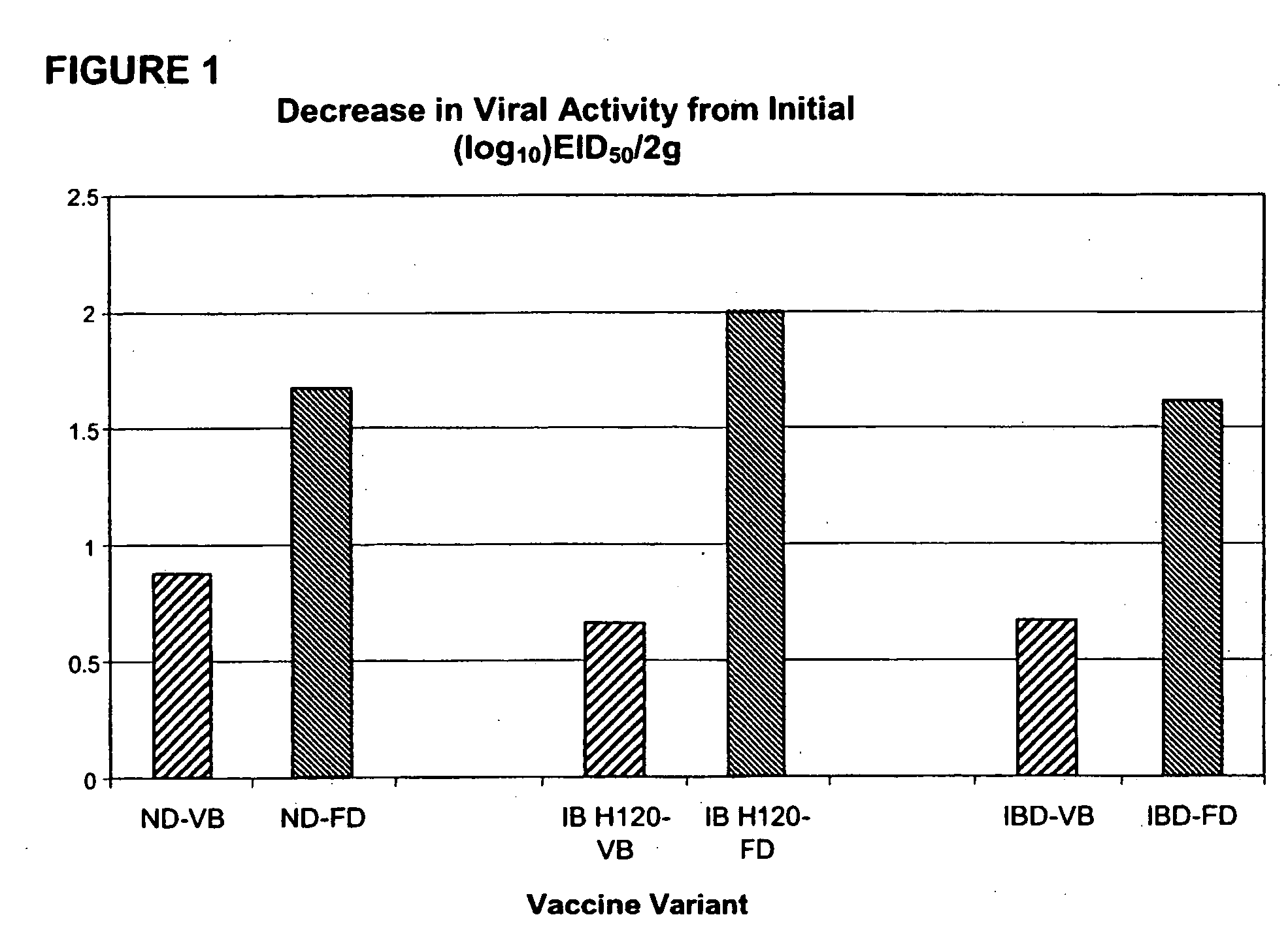Vaccines
a technology for vaccines and vaccines, applied in the field of vaccines, can solve the problems of loss of infectivity, inability to fully absorb the vaccine,
- Summary
- Abstract
- Description
- Claims
- Application Information
AI Technical Summary
Benefits of technology
Problems solved by technology
Method used
Image
Examples
example 1
[0217] A Huttlin Turbojet spray dryer is modified so as to provide a fluidised bed of particles for contact with a sprayed immunogen containing fluid. In particular, the Turbojet spray dryer was modified to include spray nozzles to provide a fluidized bed, and spray nozzles which spray the immunogen containing fluid from the bottom of the processing vessel in an upward direction.
[0218] Commercially available spray drying apparatus spray a solution or slurry into an airstream and allow the material to dry as it falls by gravity. The material may be subsequently sprayed to yield agglomerates. In contrast, in this example, particles of a pharmaceutically acceptable water soluble material are added to the spray dryer so as to provide a fluidised bed. The fluidised bed is sprayed with the immunogen containing fluid.
[0219] The dryer was operated at a temperature between about 35° C. and 42° C.
example 2
[0220] Sugar particles, in the form of mannitol or dextrose monohydrate, were loaded into the fluidised bed of Example 1 and fluidised with air at a temperature of 35° C. or 42° C. The fluid air volume was 200 cm / hr.
[0221] A commercially available vaccine against avian infectious bronchitis virus, H120 was diluted 1:1 with either: [0222] (a) 5% sucrose, 5% skim milk, purified sterile water to 90%; or [0223] (b) a solution containing gelatin, dextran, phosphate buffer at pH 7, disodium EDTA, mannitol, egg albumin and glycine.
[0224] The resulting fluid containing viral particles were then sprayed onto the fluidised sugar core material at a spray rate of 12 g / min per 2 kg batch, at the fluid air volume of 200 cm / hr.
[0225] The vaccine composition was recovered from the fluidised bed at a moisture content between 0.1 to 8% as measured using infrared moisture analysis. As an alternative measure of moisture content, the water activity as an endpoint of moisture content can be measured. ...
example 3
[0228] The process of Example 3 was carried out using fluidised mannitol particles, sprayed with a fluid containing the H120 avian infectious bronchitis vaccine mixed with an equal volume of stabilising media (b). The resulting fluid was sprayed onto the fluidised mannitol particles. A free flowing particulate composition was recovered having a moisture level of 2.51%. The process normally took about 20 to 30 minutes to complete.
[0229] The same amount of vaccine fluid was subject to freeze drying over a 3 day time period. The end products were then tested for vaccine potency by measuring viral infectivity in chicken embryos according to Example 2. Results are shown in Table 1.
TABLE 1VaccineTechnologyPotency (log EID50)ND-H120Vaccine Stabilisation Technology5.50□(operated at 37° C.)Freeze-dried Technology5.50
[0230] The same potency was found in both products.
[0231] This example demonstrated that the dried vaccine composition according to the invention had equal potency after prod...
PUM
| Property | Measurement | Unit |
|---|---|---|
| temperature | aaaaa | aaaaa |
| temperature | aaaaa | aaaaa |
| particle size | aaaaa | aaaaa |
Abstract
Description
Claims
Application Information
 Login to View More
Login to View More - R&D
- Intellectual Property
- Life Sciences
- Materials
- Tech Scout
- Unparalleled Data Quality
- Higher Quality Content
- 60% Fewer Hallucinations
Browse by: Latest US Patents, China's latest patents, Technical Efficacy Thesaurus, Application Domain, Technology Topic, Popular Technical Reports.
© 2025 PatSnap. All rights reserved.Legal|Privacy policy|Modern Slavery Act Transparency Statement|Sitemap|About US| Contact US: help@patsnap.com

